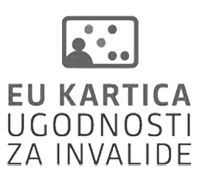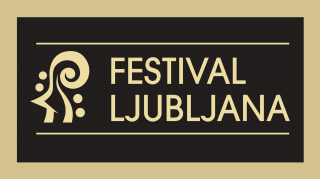Important information
It would be very difficult to sum up the full breadth of Franco Vecchiet’s creative explorations in a single word or sentence, and even the title of the exhibition in the Knights’ Hall – Ablative: The Sixth or Separative Case – merely hints at the possible reflections and experiences that the artist offers viewers on this occasion, since the present selection and hanging of his works, like his entire creative oeuvre, which dates back to the late 1960s and embraces a broad spectrum of artistic genres, establishes a dialogue and an interaction, reveals and opens gazes and feelings, speaks through symbols and memories, and presents, in a very special manner, the depths of his convictions. Of his artistic, philosophical, sociological and anthropological interests.
Franco Vecchiet (Trieste, 1941) is among the most important artists from the western border area. Active in the Slovene, Italian and wider European contexts, he is noted both for having established a recognisable link between the avant-garde constructivist and modernist exploration of the environment he comes from, and as an artist who, while leaning on [Avgust] Černigoj’s legacy, has thrown himself open both to traditional artistic techniques and to the very latest media and approaches. Constantly searching, exploratory, playful and curious, broad of spirit and free in his explorations, he has for decades expressed himself in a variety of printmaking techniques (most profoundly in woodcut); in drawing and painting, where his notable works include collages, assemblages and paste-ups; in conceptual objects and installations; in portfolios of prints and one-off art books. Alongside all this activity, he has for many years been building and refining his knowledge and artistic beliefs through teaching and curatorial work and the writing of theoretical texts. The full spectrum of his researches and explorations was persuasively set out in the Memorabilia exhibition at the Revoltella Museum in Trieste in early 2014 and a second exhibition, Limina, at the Civic Gallery in Piran a year later. These exhibitions captured the full span of the last ten years of the artist’s work by means of a mosaic technique that combined smaller works into a single whole, uniting them in a new world instead of separating them, and addressed his memories, thoughts and visions through prints, collages, sculptures and installations that were typically presented thematically rather than chronologically. A special place at both exhibitions was occupied by the installation Similare. The exhibitions also included works from the artist’s celebrated museum of paper planes. In the accompanying monograph he discussed, among other interesting topics, his understanding of originality, which reveals itself, interweaves and merges in his works, including those exhibited in the Knights’ Hall, in a manner that is unique to him: “Once upon a time the word ‘originality’ was essential in discussions about art. Perhaps because originality as a value has begun to disappear. The world has embarked on a path of superficiality and conformism. Parallel to this, art has become the field of a kind of adaptation and has followed established patterns. It has learned the piratical skill of forgery. Is it truly possible to understand this phenomenon and set limits to it? During my wanderings through exhibitions and museums, I too have ‘stolen’ details from the widest variety of works of art. I confess my sin. I have gathered together a selection of appropriated images, particulars and details of various works, and created a kind of ‘work’, a private collection which is, at the same time, the fruit of collective work, since it contains the creations of artists from various parts of the world. Naturally, they do not know that they are part of my collection . . . This idea could be a mirror image of other contemporary works of art in which the important thing is precisely the fact that they are not original” (Memorabilia, ZTT, Trieste, 2014).
Franco Vecchiet is original in his unoriginality, in his search for roots using a variety of materials and artistic resources without hiding his inclination towards geometrism and pure planar space, and towards a carefully considered selection of colours within a highly simplified palette without renouncing interventions in the two-dimensional plane or solutions in the third dimension. In a search for dialogue with the viewer and an invitation to understand, feel and accept his artistic aesthetic solution and artistic credo. In his view, art tries to “maintain the tie between memory and the present, between tradition and innovation” (Novi Matajur, Cividale del Friuli, 2014). Every work of art “inevitably talks about past events, but art must then confront the present. Art loses a good part of its meaning if it is separated from the past. And without memories of past times, we cannot understand it either” (Novi Matajur, Cividale del Friuli, 2014). Between past and present in the present, since, as Vecchiet himself has put it, we are paradoxically able to say that “in some way the past is the product of the present. A work of art is a kind of ‘universal joint’ between these two poles. That is why art does not reflect a precisely defined historical event.
Time in art covers a very broad span, it is ‘broad time’. It has its roots in the past of subjects, voices, ideas, views of the world, yet it naturally aims towards the future, to which it is driven by changes. For this reason, true works of art do not exhaust themselves in the period in which they are created and instead resist time” (Novi Matajur, Cividale del Friuli, 2014).
This trace and reflection of time is radiated by all of Vecchiet’s works in all periods. In his early period this was particularly true of his works made using the classic woodcut technique, where he reveals his own poetics and enters an area of space as artistic space, which he later sees, feels and understands as a possibility for the realisation of installations in which wood – a particular challenge to him in woodcut – is among the more important materials, since with its living spirit, softness and warmth, its organic and functional characteristics, it allows him manifold artistic interpretations. As do canvas, paper, glue, lead and a whole range of everyday items, from newsprint of varying structure and colour to tickets, pages from the phone book, sauce stains, the wine-coloured rings left by dirty wineglasses, and also from salt and traces that are as black as coal, and, last but not least, from the impressions of tiles and the paths traced by woodworm, which, as Andrej Furlan put it in the monograph (Memorabilia, ZTT, Trieste, 2014), are “fragments of life that in Vecchiet’s creations become an integral part of the work of art. These are not mere details inspiring the artist’s work or our reading of it. In Franco’s skilful hands, everyday objects are transformed into subjects like a bearer of memory and into the mediators of the projects through which the artist wishes to create a new world.” In all his works, including in paintings that, like the majority of his works in other artistic genres, have their roots in a strict geometrical starting point, he seeks to make an original substantive and artistic statement and exploits the technical possibilities to perfection: the mixed technique, most frequently collages, assemblages and paste-ups, that offers him an alternative approach, above all facilitates free applications of colour to the canvas or paper and in this way the creation of a relief-like character and an opening into a third dimension. At the same time it offers possibilities of variant solutions in different choices of colour and structure, new structural solutions and a wider choice of materials. This technique also encourages him to engage in an unencumbered and free artistic game that in turn opens up expressive possibilities and artistic-aesthetic laws and stimulates the creative imagination and the use of new technologies. The present exhibition in the Knights’ Hall, part of this year’s Slovenian Music Days, speaks to us both through the hanging or installation of the exhibition itself and through the selection of collage paintings from the Diaries cycle, which Vecchiet has been creating since the start of the century as a subtle and intimate artistic record of his everyday life, trapped in memories, reflections, wishes and yearnings, and of his activity
as an artist and sentient being with materials and objects as his daily companions and the bearers of past and present; of the moment that gives birth to a new artistically felt composition in a vision that has a constructivist mood and a harmonised sense of colour, relief and space. These diary entries made in the pasteup technique – which see him spontaneously, intuitively and freely pasting scraps of paper and newspaper and magazine cuttings to the canvas, giving deliberate prominence to words and letters in various languages that combine with tonally undulating, now transparent, now paste-like coats of paint and layers of adhesive in an interesting, constructivistically and abstractly inspired picture plane, to which he frequently adds a wooden or lead constructivist relief – are a mirror of his journey into the world of art, which he experiences as a sensitive blend of those current global issues with which he feels particularly engaged and tried and tested artistic values: “I am a total supporter of engaged art and its ethical role. I am aware that if this engagement is conceived and realised in a banal fashion, then that is the end of art” (Novi Matajur, Cividale del Friuli, 2014). For this reason, his works are engaged but they are also extremely intimately felt and masterfully accomplished in the technical sense, in an enviable spectrum of associative starting points, including a reflection on the Latin grammatical case known as the ablative or separative, which expresses a point of departure or a moving away, but which the artist understands very broadly and creatively, including as an origin that offers opportunities for separation, taking away and distancing, but also for connection and, within this exhibition concept, for the entire breadth of the artist’s understandings, visions, feelings and deep sense of belonging to space and time.
Nelida Nemec


